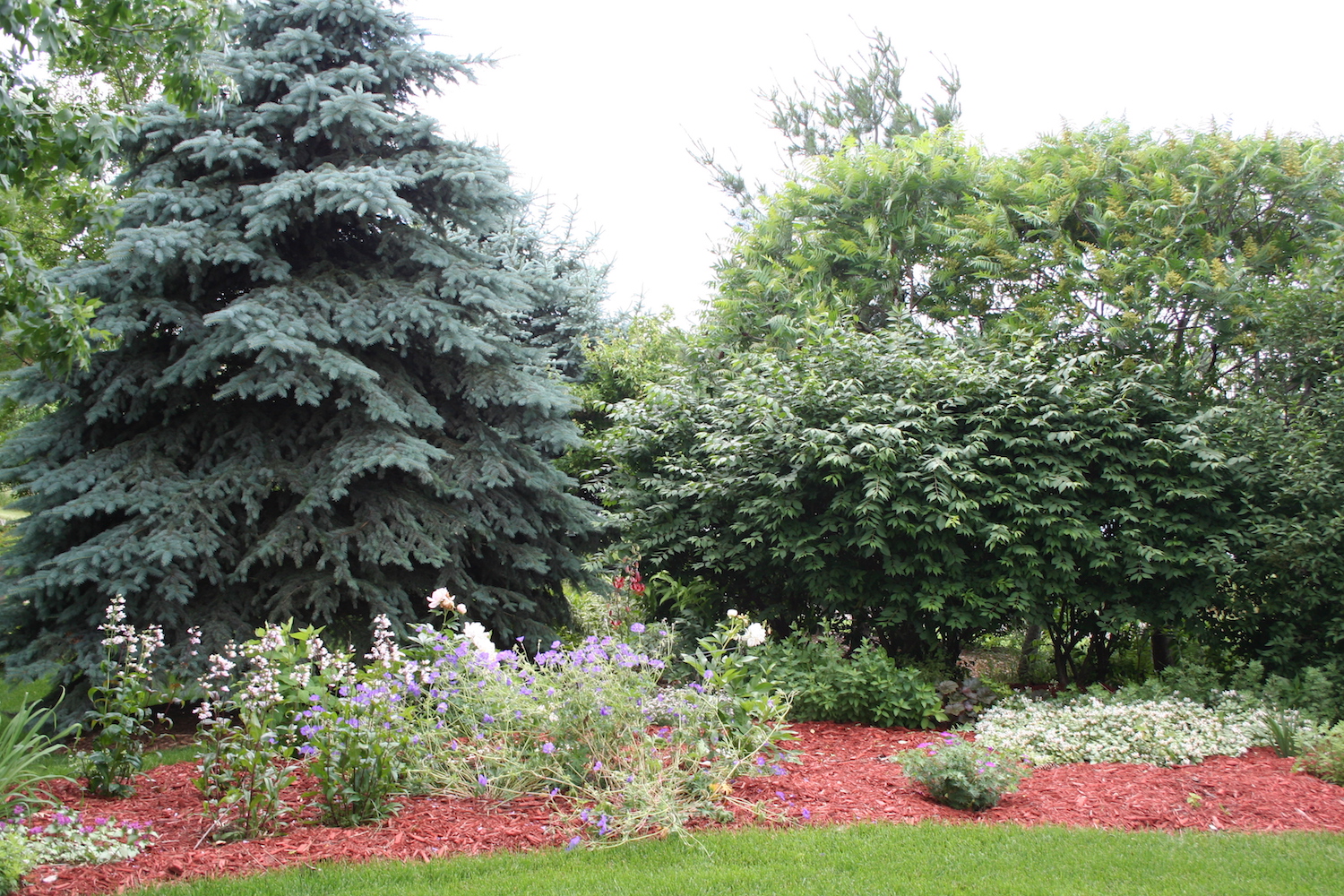For the last week or so, in between sleet storms, I’ve been watching robins pecking at the fruit on the three big sumacs at the edge of our property. (The robin is on the third sumac fruit from the left.) That’s what I love about sumac. It fits with our property and the environment around us. It supplies structure in the garden, with it’s big arching branches. It has interestingly shaped foliage, fuzzy branches in the spring, red leaves in the fall, and huge, rust-colored fruits that feed birds and supply winter interest.
Its adaptability is also why I hate sumac. It sends up shoots relentlessly–and once they get established, it takes more than a tug to pull them out. Today, I spent about half an hour cutting the shoots, some of which had multiple branches, trying to get ahead of the sumac for this year. I’ll be doing it again in June no doubt, and some time later in the summer as well. The sumac in my yard is a regular staghorn sumac, which is common in Minnesota.
There’s a newer variety out, introduced by Bailey Nurseries of Newport, Minn., in 2004, called Tiger Eyes. Tiger Eyes grows more slowly than the regular staghorn and has a more finely cut foliage that’s yellow with red streaks when it first emerges and turns a bright orange in the fall. If you like the look of sumac, but don’t enjoy pulling suckers, it might be a good choice.
Update from 2018: Tiger Eyes is now a ubiquitous sumac. It’s pretty and I’ve used it in both my Northfield and St. Paul gardens. Sadly, it never attracted wildlife in the same way the species plant did. It also did not sucker as much. If I had a bigger property than I do now, I’d probably plant the big one.

Leave a Reply